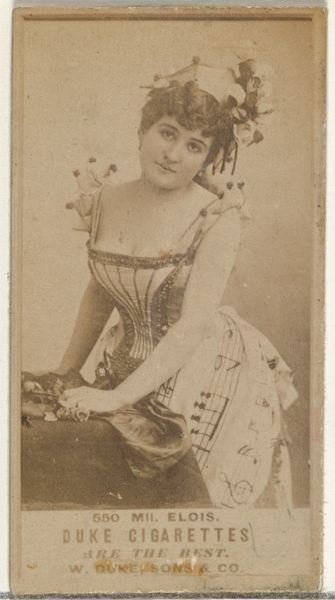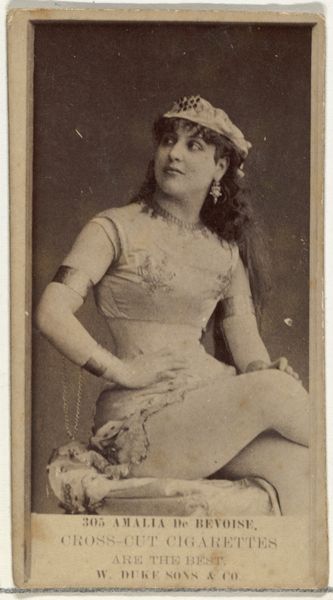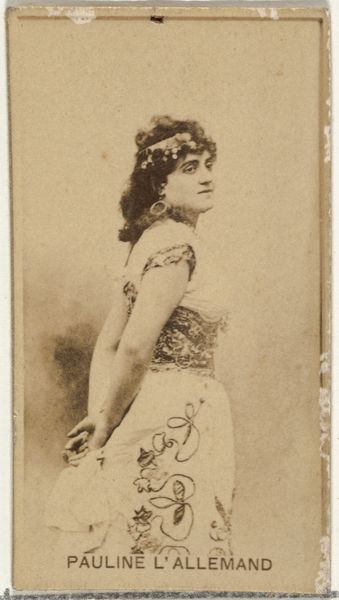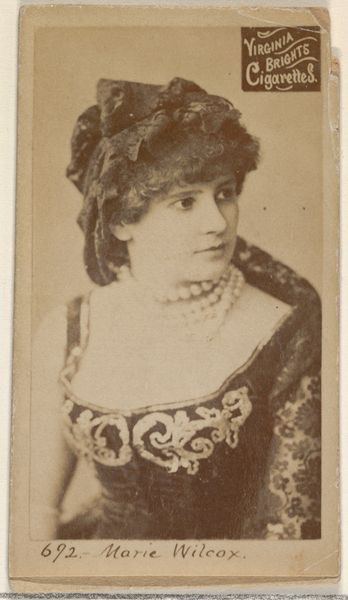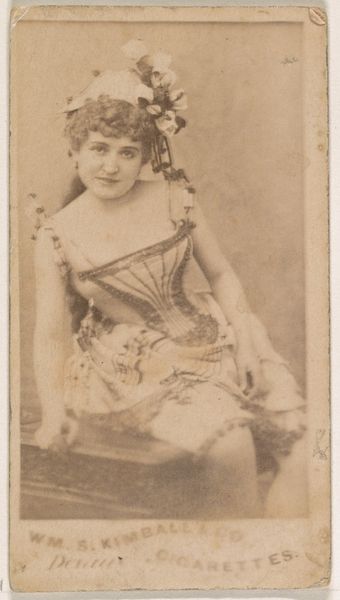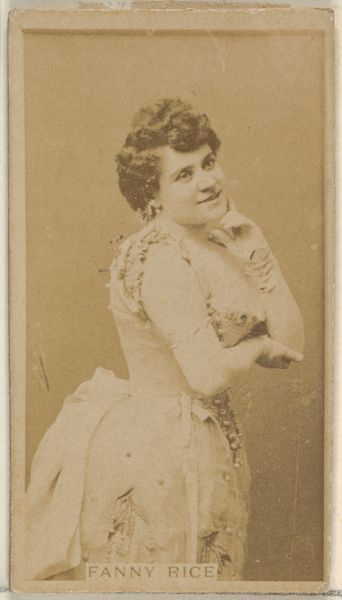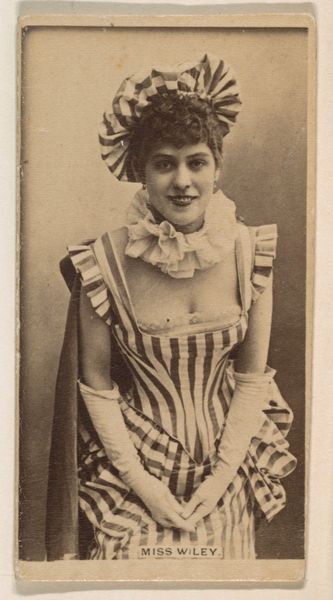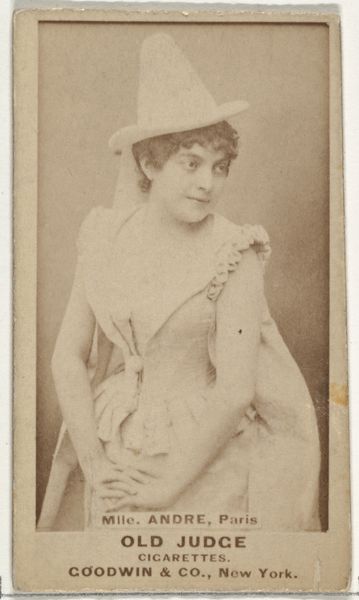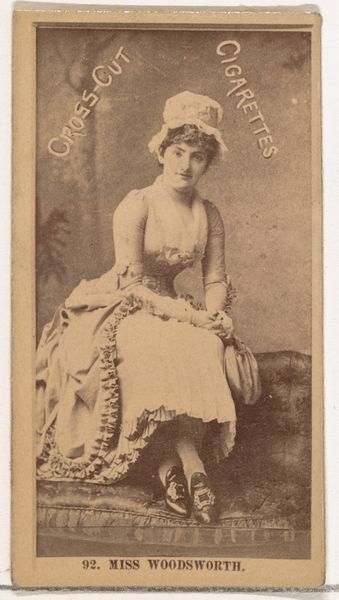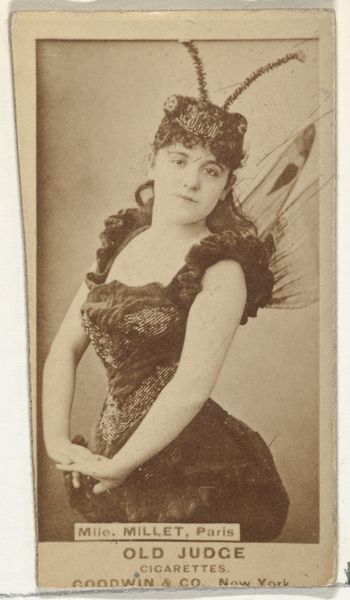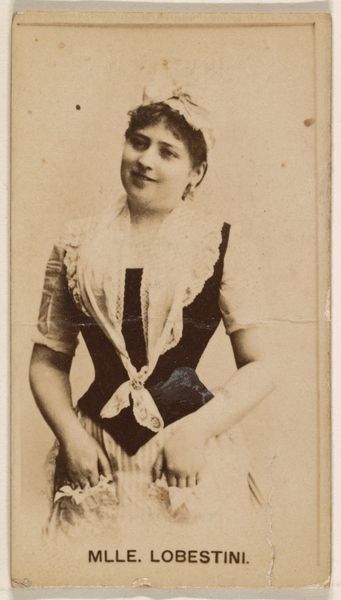
Mlle. de Eau, Paris, from the Actors and Actresses series (N45, Type 1) for Virginia Brights Cigarettes 1885 - 1891
0:00
0:00
drawing, print, photography
#
portrait
#
drawing
# print
#
photography
#
19th century
#
genre-painting
#
academic-art
Dimensions: Sheet: 2 3/4 x 1 3/8 in. (7 x 3.5 cm)
Copyright: Public Domain
Editor: Here we have "Mlle. de Eau, Paris," part of the Actors and Actresses series, dating from around 1885 to 1891. It was created by Allen & Ginter for Virginia Brights Cigarettes, incorporating drawing, printmaking, and photography. There’s something about the woman’s gaze that makes me wonder what her story is. How do you interpret this work within its historical context? Curator: It's crucial to understand these cigarette cards as reflections of the burgeoning celebrity culture of the late 19th century and its implications. The cards showcased performers like Mlle. de Eau. They simultaneously celebrated and commodified their images. These images, often of actresses or dancers, played into very specific societal expectations around female performers and beauty at the time. What kind of performance, do you imagine, might she be engaged in? Editor: Perhaps one where her looks were valued over her talent? It’s sad to consider how women were marketed alongside cigarettes. Were these cards purely exploitative, or did they offer any form of agency to the women depicted? Curator: It's a complex issue. On one hand, the mass production of these images, primarily consumed by a male audience, reinforced the objectification of women in entertainment. But, these cards could also increase an actress' visibility, boosting her career in an era where opportunities for women were limited. These images became tools—how they wielded them (or not) is another story. Editor: So, it’s a double-edged sword; exploitation versus limited opportunity. It is fascinating to examine a seemingly simple image within a broader socio-political context. Curator: Precisely. Recognizing those nuances allows us to challenge the assumptions baked into how women were represented and consumed at that time - and still today.
Comments
No comments
Be the first to comment and join the conversation on the ultimate creative platform.
